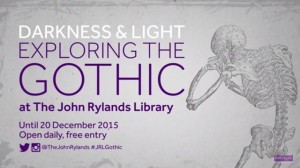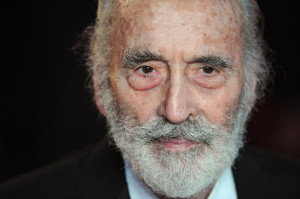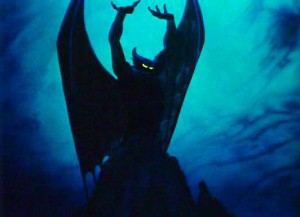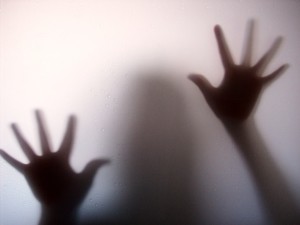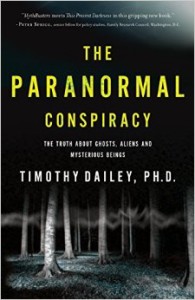 A volume at the Patheos Book club recently caught my attention. It is The Paranormal Conspiracy: The Truth About Ghosts, Aliens and Mysterious Beings (Chosen Books, 2015) by Timothy Dailey, Ph.D. An excerpt from the book and an interview with the author are available at Patheos. From time to time we explore the paranormal at TheoFantastique, and this volume seemed like a natural one to review.
A volume at the Patheos Book club recently caught my attention. It is The Paranormal Conspiracy: The Truth About Ghosts, Aliens and Mysterious Beings (Chosen Books, 2015) by Timothy Dailey, Ph.D. An excerpt from the book and an interview with the author are available at Patheos. From time to time we explore the paranormal at TheoFantastique, and this volume seemed like a natural one to review.
Early on in this book Dailey tells the reader what his volume is all about. He states, “Our premise is that a diabolical conspiracy is afoot: a plot to lead human hearts and souls eternally astray” (13). This includes “occult manifestations” and “the paranormal worldview” that Dailey associates with demons, resulting in a Paranormal Conspiracy, “the diabolical plot to overthrow the Judeo-Christian worldview and plunge the world into darkness and chaos not unlike that of the cinematic zombie apocalypse” (12, 13).
Dailey develops his thesis through twelve chapters of analysis of various expressions of the paranormal and aspects of Western esotericism. This includes the shamanic tales of Carlos Castaneda, Bigfoot, UFOs and the alien abduction stories of Whitley Strieber, the Theosophy of Helena Blavatsky, psychic mediums, cyber mysticism influenced by Aleister Crowley, and the mythic figure of The Trickster.
For those familiar with evangelical treatments of “the occult” and various new religious movements or “cults,” Dailey’s volume represents nothing new that hasn’t been done in years past by authors like Walter Martin, Gary North, John Ankerberg, John Weldon, and Frank Peretti. Although some of the topics Dailey explores may be more recent than those found in previous apologetic tomes, his approach is anything but novel as he links various phenomenon together and connects them to his evangelical Christian worldview by way of the cosmic dualism of God and the devil, spiritual warfare, and counterfeit spirituality, with a strong dose of conspiracy thrown in. For evangelicals books like Dailey’s provide a boundary maintenance function, identifying alleged evil phenomena, and comforting the reader with the assurance that in the end God will triumph over these spiritual forces. It’s too bad that just as some scholars are starting to take a serious look at what the paranormal might mean for religion and human experience through publications like Nova Religio and Paranthropology, that this volume seeks to bypass such inquiry as theologically out of bounds. But whether one agrees with Dailey’s paradigm and understanding of the paranormal or not, there are aspects of The Paranormal Conspiracy that are problematic.
First is the issue of definitions. The paranormal is a fringe area of scholarly study, and one that finds little support in the academic study of religion. For this and other reasons it is difficult to find formal definitions of the paranormal in the scholarly literature. When it comes to definitions in this area it is somewhat similar to defining art or pornography: we think we know it when we see it. Dailey’s treatment is similar in this regard in that he includes various things that have come to be associated with the paranormal in popular discourse including cryptozoology (Bigfoot), UFOs, various psychic phenomena, as well as UFOs and alien abduction. But Dailey also includes certain expressions of the Western esoteric tradition in the study of new religions, including Theosophy and Helena Blavatsky, and the Thelemic magick of Aleister Crowley. All of these are included under the banner of “the paranormal,” but Dailey also describes them broadly as “the occult.” Distinguishing between the paranormal and the occult can often depend on who is doing the analysis, but this volume includes a major deficit by way of a failure to introduce and ground the subject matter by way of definitions and discussion of the context of religious studies and new religious movements.
Second Dailey also lacks a sense of self-awareness and self-critique in regards to what is classified as legitimate and illegitimate religious experience. As scholars like Jeffrey Kripal have noted, there is a tendency to privilege mainstream religious practices as normative and to see the paranormal as heterodox and fringe. As a result, Dailey easily dismisses the paranormal, while failing to note that glossalalia, miraculous healings, spirit possession and exorcism from the Christian tradition bear strong affinities if not parallels with paranormal experiences.
Third, like most evangelicals writing on “the occult,” Dailey shows little depth by way of an awareness of the Western esoteric tradition. He writes about the occult and the “New Age,” but fails to situate this within the growing body of scholarly work on Western esotericism. And while he is concerned about the popularity of paranormal beliefs, Dailey still seems to consider esotericism fringe, rather than demonstrating an awareness of it as the third major religious tradition in the West alongside Christianity and Judaism as J. Gordon Melton has noted.
Fourth, one of the chapters focuses on the shamanic volumes of Carlos Castaneda. Here Dailey’s argument for a paranormal conspiracy is severely undermined as one of the links in his conspiratorial chain is suspect. Serious criticisms have been levied against Castaneda, so much so that the author is dismissed as a fraud in some circles. As Robert Marshall writes in Salon.com:
Among anthropologists, there’s no longer a debate. Professor William W. Kelly, chairman of Yale’s anthropology department, told me, “I doubt you’ll find an anthropologist of my generation who regards Castaneda as anything but a clever con man. It was a hoax, and surely don Juan never existed as anything like the figure of his books. Perhaps to many it is an amusing footnote to the gullibility of naive scholars, although to me it remains a disturbing and unforgivable breach of ethics.”
Finally, Dailey’s discussion of “The Zombie Apocalypse” in Chapter 11 is extremely disappointing. He devotes two pages to the current zombie phenomenon in popular culture, but the rest of the chapter is devoted to the author’s concern over “a primal fear of dark primordial forces that stalk the modern world” (163). Using this approach to zombies, Dailey misses a real opportunity to discuss the cultural, social, psychological, and theological significance of these monstrous icons in popular culture.
For those interested in more informed and balanced explorations of the paranormal and Western esotericism there are other books that will be far more helpful. These include Paranormal America by Christopher Bader, F. Carson Mencken, and Joseph Baker; Haunted Ground by Darryl Caterine; Authors of the Impossible by Jeffrey Kripal; UFO Religions edited by Christopher Partridge; and The Occult World also edited by Christopher Partridge.
Related posts:
“Bader, Mencken, and Baker: Paranormal America”
“Jeffrey Kripal Interview on Mutants & Mystics: Comics, Sci-Fi and the Paranormal”
“Jeffrey Kripal – Authors of the Impossible: The Paranormal and the Sacred”
 The Monster Stares Back: How Human We Remain through Horror’s Looking Glass (Inter-Disciplinary Press, 2015), edited by Mark Chekares and Marcia Heloisa
The Monster Stares Back: How Human We Remain through Horror’s Looking Glass (Inter-Disciplinary Press, 2015), edited by Mark Chekares and Marcia Heloisa
